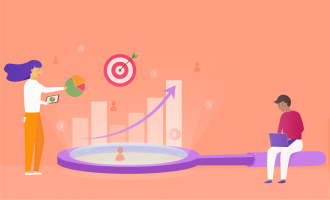Customers are full of insightful information you can use to make better products and increase sales, but you have to ask the right questions to get the right information. The exact questions you ask may differ depending on your product or service, the type of customers you’re surveying, and your survey method — but the market research survey questions below provide a solid foundation.
Customer interest in a new product or service
1. Have you interacted with this kind of product already (e.g., own/owned it, used it)? If so, where did you get it?
Charlie Worrall, digital marketing executive at Imaginaire Digital, says that by asking this question, you’re able to determine whether customers are familiar with the concept of your product or are completely new to the idea. In addition, asking where they got the product helps you develop a profile of your biggest competitors.
2. What current challenges are you facing that would encourage you to use this product?
Emma Rodbro, customer success lead at Seniorly, says knowing why customers want this product helps you understand their pain points, which you can use to better market your product.
3. How often would you use this product?
“Knowing how often the product would be used can offer a little insight into your customers’ lives,” says Worrall. Depending on the product, the frequency with which customers will use it may influence your choice of production materials. For example, you may need to choose more durable materials to extend the product’s life.
4. How long after first hearing about the product did it take for you to purchase it?
Finding out how long it took for your customers to purchase the product after finding out about it gives you a better idea of a customer’s typical decision time line. “With this information, you could develop a marketing strategy and create more of a buzz for the product, which may shorten the time it takes to move customers through the purchase cycle,” explains Worrall.
Customer feedback on a product or service purchase
5. What would make you choose our product over a competitor’s?
Worrall says this question gives you a feel for why your competitors are your competitors. You’ll get insight into what you’re doing right and what they’re doing wrong. “This could help you stay ahead in the market.”
6. Which feature made you most interested in purchasing this product?
This question helps you prioritize product features for the future, when you consider redesigning or improving the product down the line. It also checks your assumptions about customers’ specific interests. “Without a key feature a customer wants to see, they may be more likely to go elsewhere for the same product,” cautions Worrall.
7. What was your biggest challenge when using this product?
Worrall says that by defining the key difficulties customers encounter, you’ll be able to mitigate them and improve customer satisfaction. For example, you may need to create an instructional video, make the product easier to use, or completely redesign it.
8. What are three areas of improvement for this product?
Rodbro says this is your opportunity to get important insight from your customers on creating a better product. Even if the customer likes the product, they may be more inclined to purchase a competing product if it offers features or an experience your product lacks. Depending on what improvement points they share, you may be able to increase the price (if it offers greater value) or reduce the price (if it results in less costly production), or something else entirely.
9. How likely are you to recommend this product and why?
It’s important to get an overall assessment of a customer’s feelings about your product, especially in the form of a scale (such as 1 to 10). “If they’d recommend the product highly to someone else, it means that they’re largely happy with the product’s ability to meet their needs,” explains Worrall.
This will also give you an idea of the kind of marketing to use. According to the Two-Step Flow communication process, there are opinion leaders in social groups who will influence the rest of the group to purchase a product. Then others will recommend the product to their respective social groups. “Any customer could be the opinion leader in their social group, so it’s important the answer to this question be high on the scale. If not, review answers to the other questions to see how you can increase this number in the future.”
Looking for more help in your market research journey? Check out our lengthy guide on performing market research.











































































Send Comment: